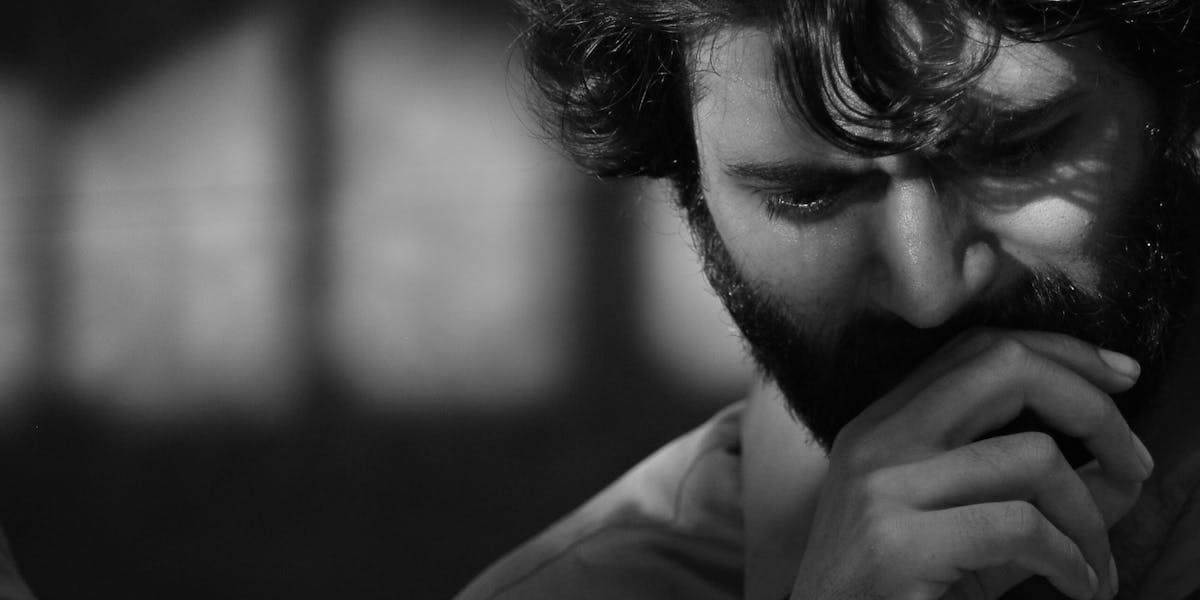
Author
Amuthan M
Amuthan shows great interest towards post-modern story narration and loves analysing and writing about them. He is persistently trying to understand the minds of creators of arts and how they construct the society.

"I spent my life trying not to be careless. Women and children can be careless but not men”
-Don Vito Carleone from Godfather (1972)
I still remember the day like yesterday when I posted these lines in my social network after having watched Godfather. I was in my first year of Engineering course and looking back; I feel cringe to have shared it. I had to face lots of flak from my female batchmates and relatives. Though I initially thought it to be funny, the depth of those lines only occurred to me after receiving criticism. The Godfather unarguably is a cinematic masterpiece, and there are many things that every filmmaker should learn from it. But the theme of masculinity it showcased is harmful to the current society. In many ways, the film glorifies toxic masculinity. Apart from these lines, there are many pieces of evidence in the movie to support this point. When trying to analyze a movie these days, apart from the cinematic elements, observing its impact on society has also become important. There is a saying, “Art imitates life and life imitates art”. Though initially art was inspired by life, it has evolved to a point where we are taking inspiration from art itself.

Image from the movie "Nerkonda Paarvai"
Even films such as Nerkonda Paarvai that vouch to break gender stereotypes have got scenes glorifying masculinity. These kinds of films justify this toxic idea by conveying the message that “women are weak”. These stories evolve in a way where women are saved from society by the male lead. There is a concept in cinema called the “White Saviour narrative”, where a guy from the white community will fight for the improvement of the lives of the blacks. Alternative versions of this concept involve a person from one community joining another that has a history of oppression and fighting for them. This concept, intentionally, but also indirectly conveys a message that the people of the oppressed community are weak and that they need a guy from the opposite clan to save them. Funny, isn’t it? Two celebrated Tamil movies from last year, Bigil and Nerkonda Parvai had a male lead purposefully created to protect the female characters from danger. Apart from male supremacy, films like Avatar, The Last Samurai, and Green book had implemented their versions of the White Saviour narrative. Though it is necessary to support and help the opposite community especially when they are being oppressed, stories that portray a leader from another clan guiding the oppressed have the potential to hugely impact the society and create a mindset that the opposite community is weak and cannot develop on its own. There is a Tamil film called Vidhi (1984), which breaks all these white saviour complexities by having a strong female lead. Undoubtedly, the film handles the concept of feminism correctly.
On the positive side, a fair number of today’s films manage to give justification to its female characters by making them point out the flaws in the male lead. While developing the character of its toxic male lead, the film Arjun Reddy makes use of love and its associated emotions. The filmmaker justifies every action of Arjun by showing us his failed love endeavour. However, during Arjun’s final conversation with Preethi (the female lead), she points out all his flaws, and at the point, even we as audiences realize his mistakes. We empathized with Arjun only because we were not being shown the other side of the story. But in the end, we get to know that Preethi suffered just as much as Arjun. The director perfectly captures all those flaws of the character paving the way for a perfect payback at the end. All the friend characters shown in the film are ethical meters to Arjun. They warn him when he goes beyond his limits. Thus, the writer makes sure that the audience is aware of the fact that Arjun isn’t a perfect man. You might have noticed the scene where he threatens a girl with a knife. He has no emotional attachments to her and wants just her physical being. Arjun is the kind of person who can clearly distinguish the physical and emotional qualities of the other characters in the film and prioritize his expectations from them accordingly. For example, in the opening scene his Grandma explains that when given an identical toy as a replacement for an existing broken toy, he refuses to accept it, demanding the same toy as he couldn’t find the same emotional attachment with this new toy. This is what exactly happens to him with Preethi’s case. If one overlooks these details, the film looks as if it glorifies toxic masculinity. This has the potential to leave dangerous impacts on society.

Characters from the movie "Kumbalangi Nights"
In Kumbalangi nights, when the couple Bobby and Baby decide to go for a film, they choose Arjun Reddy. This depiction is a conscious choice made by the director as we get to see Bobby yell, “I am a male. Keep that in mind.”, just after he gets slapped by his love interest, Baby. This scene is a brilliant portrayal supporting the statement “Life imitates art”. In recent days, Malayalam cinema cuts hardly any slack when it comes to slamming toxic masculinity. The Shammi character portrayed in Kumbalangi Nights deserves to be revisited when talking about toxic masculinity. Apart from his psychopathic behaviour, he is an apt representation of men who fantasize themselves as perfect ideal dominating males. Towards the end of the movie, he delivers the dialogue, “Shammy hero aah da, Hero!”. This is arguably the best representation of a man showing toxic masculinity in films. The movie displays various kinds of male characters who are similar to the ones existing in the society. Saji, a man who comes across as weak both mentally and physically; Bobby, a young romantic man; Bonny, a modern man with artistic taste; Frankie, a teen boy and finally Shammi. By showing male characters getting engaged in cooking, Malayalam cinema has succeeded in conveying the messages which popular movies of other languages haven’t dared to discuss.

Fahadh Faasil in Maheshinte Prathikaram
Let us now talk about how society expects its men to be. In Maheshinte Prathikaaram, after getting beaten up by the antagonist publicly, the protagonist Mahesh is forced to take revenge on him. This was an essential duty for Mahesh as that would enable him to regain his lost respect in society. This movie brilliantly displays the social nuances existing about masculinity. Ayyappanum Koshiyum is a new cinematic gem that talks about the same matter. In the film, the character Koshi’s father is a personification of the entire society. Even when Koshi tries to get rid of the mindset of exerting revenge, his masculinity is questioned by his dad. Always, Koshi’s dad keeps pushing him to commit violent acts. He finds that to be accepted as a male by his dad, he had to do things he did not intend to do and thus continues his pursuit of exerting revenge.
The following conversation that takes place between Koshi and his dad carries much significance.
Koshi: This will end only if one of us died.
Koshi’s father: That’s how the lives of men are, you spineless fellow.
Koshi: What about the life of women then? If that happens one would be a widow, and the other one would be the wife of a murderer.

Prithviraj and Biju Menon in Ayyappanum Koshiyum
This short yet powerful scene brilliantly brings out the flawed ideas of masculinity existing in society. There are many such movies which we can dig deeply to identify underlying themes as mentioned above. Most of the films answer these toxic themes and mindsets through plot developments itself. Though the ultimate purpose of cinema is entertainment, we cannot expect everyone to understand this truth and carry a casual mindset. So, when filmmakers are trying to show these themes in films, they should manage to strike a balance between the plot and its characters. That’s why poetic justice in every moment of narration is essential. That is how you bring morality and promote equality through stories.
DISCLAIMER: The opinions or views expressed are views of the individual writers and not of the institution. All forms of content published in this website and Student Journalist Council - GCT's social media handles are strictly properties of Student Journalist Council - GCT and are works of the various teams of the respective academic years.
No article, story or any form of content produced by Student Journalist Council - GCT is meant to be reproduced or distributed, either in parts or whole, without prior permission from Student Journalist Council - GCT for any purposes.